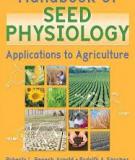
TÀI LIỆU THƯ VIỆN SỐ
- Toán học (546 )
- Vật lý (456 )
- Hóa học (373 )
- Sinh học (280 )
- Văn học (620 )
- Lịch sử (332 )
- Địa Lý - Thiên văn (306 )
- Ngoại ngữ (301 )
- Mỹ thuật - Hội họa (250 )
- Âm nhạc (355 )
- Thể dục (459 )
- Quản lý Giáo dục (453 )
- Tâm lý - Giáo dục (468 )
- Sư phạm Tiểu học (519 )
- Sư phạm Mầm non (608 )
- Kinh tế - Ngân Hàng (621 )
- Quản trị KD - Du lịch (533 )
- Công nghiệp (339 )
- Điện - Điện tử (681 )
- Công nghệ thông tin (921 )
- Thông tin - Thư viện (495 )
- Văn hóa - Nghệ thuật (305 )
- Khoa học thường thức (192 )
- Chính trị - Xã hội (393 )
- Nông nghiệp (777 )
- Luận văn (483 )
- Luận án tiến sĩ (121 )
Danh mục TaiLieu.VN
- Mẫu Slide Powerpoint
- Luận Văn - Báo Cáo (344720)
- Kinh Doanh Marketing (65512)
- Kinh Tế - Quản Lý (48934)
- Tài Chính - Ngân Hàng (55898)
- Công Nghệ Thông Tin (142209)
- Tiếng Anh - Ngoại Ngữ (47066)
- Kỹ Thuật - Công Nghệ (134345)
- Khoa Học Tự Nhiên (107174)
- Khoa Học Xã Hội (82451)
- Văn Hoá - Nghệ Thuật (54408)
- Y Tế - Sức Khoẻ (173915)
- Nông - Lâm - Ngư (62504)
- Kỹ Năng Mềm (29016)
- Biểu Mẫu - Văn Bản (27610)
- Giải Trí - Thư Giãn (51994)
- Văn Bản Luật (198854)
- Tài Liệu Phổ Thông (402015)
- Trắc Nghiệm Online (213578)
- Trắc Nghiệm MBTI
- Trắc Nghiệm Holland
Handbook of Seed Physiology: Applications to Agriculture
The Handbook of Seed Physiology discusses vital topics which serve as the basis for the development of techniques and processes to improve seed performance and crop yield. In this text, you will explore:
the effect of the soil physical environment on seed germination
the roles of physiology, genetics, and environment in the inception, maintenance, and termination of dormancy
the relationship between the termination of dormancy and the synthesis and signaling of gibberellins and abscisic acid
mechanisms of orthodox seed deterioration and approaches for repair of seed damage
characteristics, behavior, and mechanisms of desiccation tolerance in recalcitrant seeds
the role of seed moisture in free radical assaults on seeds and the protective function of raffinose oligosaccharides
the production of free radicals and their effect on lipids and lipid peroxidation
components of grain quality in oil crops and factors influencing them
structural components and genotypic and environmental factors affecting barley malting quality
the effect of the soil physical environment on seed germination
the roles of physiology, genetics, and environment in the inception, maintenance, and termination of dormancy
the relationship between the termination of dormancy and the synthesis and signaling of gibberellins and abscisic acid
mechanisms of orthodox seed deterioration and approaches for repair of seed damage
characteristics, behavior, and mechanisms of desiccation tolerance in recalcitrant seeds
the role of seed moisture in free radical assaults on seeds and the protective function of raffinose oligosaccharides
the production of free radicals and their effect on lipids and lipid peroxidation
components of grain quality in oil crops and factors influencing them
structural components and genotypic and environmental factors affecting barley malting quality
Từ khóa: agricultural problems, seed physiology, crop emergence, crop establishment, dormancy, preharvest sprouting, plant hormones, abscisic and giberellic acids, weeds, grain quality, oil crops, giống cây trồng, nông nghiệp
501 p 2109002509 06/12/2012 486 4



